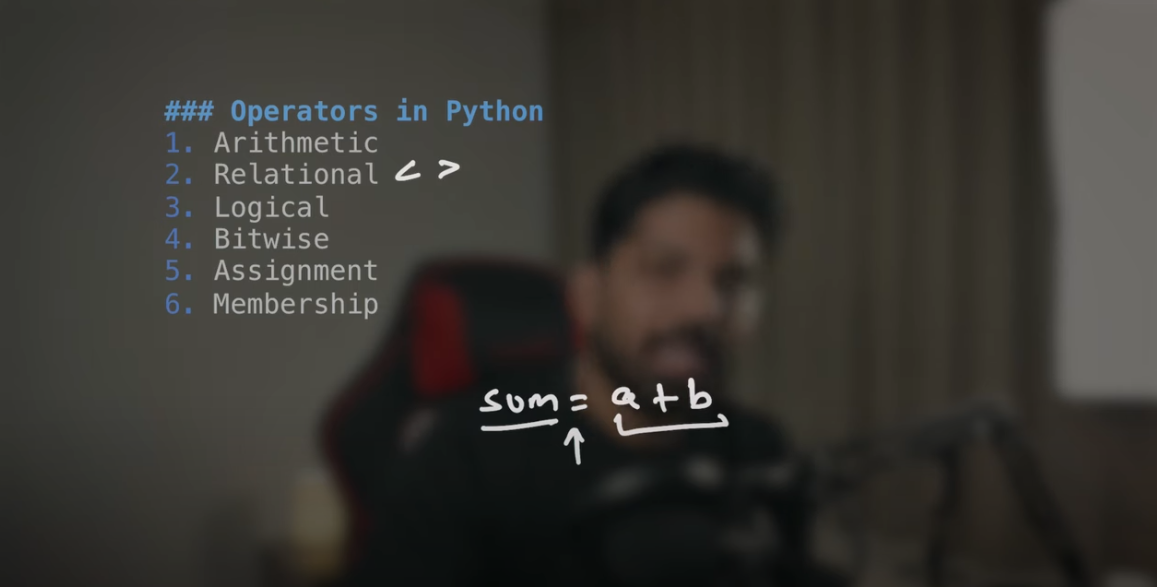Algorithmic Trading and Python: The Technology of the Future
Algorithmic trading is rapidly transforming the financial markets. Automating trading strategies through Python has now become extremely beneficial for quantitative traders. In this session, we will not only learn Python Operators and Conditional Statements (If-Else) but also touch upon the tools used in Freqtrade Strategy, Crypto Trading Strategies, and Algo Trading Software USA.
Why strong fundamentals are important?
Before we begin, it is important to understand that if your fundamental knowledge is not strong, it will be difficult to solve big problems. Understanding the role of Operators and Conditional Statements in Python will give you confidence in coding and help in large automated trading projects.
Join the Community
If you have any questions – you can reach out to us on our social media handles. Also, after each session you are given resources like:
- MCQs (Multiple Choice Questions)
- Jupyter Notebook
- Task Sheet & Mini Project
All these links are available in the video description.
Complete information about Python Operators
Operators in Python are special symbols with which we can perform calculations on variables and values.
1. Arithmetic Operators
+ (Addition)
– (Subtraction)
* (Multiplication)
/ (Division – Float)
// (Integer Division – Integer Division only)
% (Modulo – Remainder)
** (Power – Exponent)
Example:
a = 5
b = 2
print(a + b) # 7
print(a // b) # 2
print(a % b) # 1
2. Relational Operators
With these you can compare two values:
== (Equals)
!= (Not Equals)
> (Greater)
< (Smaller)
>= (Greater or Equal)
<= (Smaller or Equal)
3. Logical Operators
To check logical conditions For:
and
or
not
Example:
a = True
b = False
print(a and b) # False
print(a or b) # True
print(not a) # False
4. Bitwise Operators (Operations at bit level)
Less commonly used but important:
& (AND)
| (OR)
^ (XOR)
<< (Left Shift)
>> (Right Shift)
5. Assignment Operators (Assigning Values)
=
+=, -=, *=, /=, //=, %=
Example:
a = 5
a += 2 # now a = 7
6. Membership Operators (Checking Membership)
These are used to check whether a value is in a sequence (such as list, string) or not:
in
not in
Example:
‘BTC’ in [‘BTC’, ‘ETH’] # True
‘USD’ not in [‘BTC’, ‘ETH’] # True
Conditional Statements (if, else, elif) in Python
✅ if Statement:
if a > b:
print(“a is greater”)
if-else Statement:
if a > b:
print(“a is bigger”)
else:
print(“b is bigger”)
if-elif-else Statement:
if a > b:
print(“a is bigger”)
elif a == b:
print(“a and b are equal”)
else:
print(“b is bigger”)

Real-world Use: Decision Making in Algo Trading
In trading, we use these operators and conditions in many places like:
- To trigger a strategy
- To give buy/sell signal
- To compare indicator threshold
- To take action on bot rules.
For example:
if price > moving_average and volume > threshold:
signal = “Buy”
Watch this Day 2 video tutorial
Example: Basic If-Else for Trade Execution
# Sample trade data
price = 45000
moving_average = 46000
if price > moving_average:
print(“Sell BTC-USD”)
else:
print(“Buy BTC-USD”)
Using If-Elif-Else for Multi-Condition Trading
Why Use If-Elif-Else?
Handles multiple trade conditions
Improves quantitative analysis for trading in Singapore
Example: Multi-Condition Trading Strategy
# RSI indicator values
rsi = 28
if rsi < 30:
print(“Strong Buy Signal”)
elif 30 <= rsi <= 70:
print(“Hold Position”)
else:
print(“Sell Position”)
Using Loops for Trade Automation
Why Use Loops in Trading?
Automates bulk order execution
Improves Freqtrade strategy efficiency
Example: Looping Through Multiple Trade Signals
# List of trade signals
signals = [“BUY BTC”, “SELL ETH”, “BUY ADA”]
for signal in signals:
print(f”Executing Trade: {signal}”)
While Loop for Real-Time Market Monitoring
Why Use While Loops?
Continuously monitors market trends
Helps execute algorithmic trading without interruptions
Example: While Loop for Price Monitoring
price = 45000
target_price = 46000
while price < target_price:
print(“Waiting for Price to Reach Target…”)
price += 1000
Go ahead—challenge yourself and solidify your learning!
Day 2: Python Operators + if-else + Loops
![]()


11/20